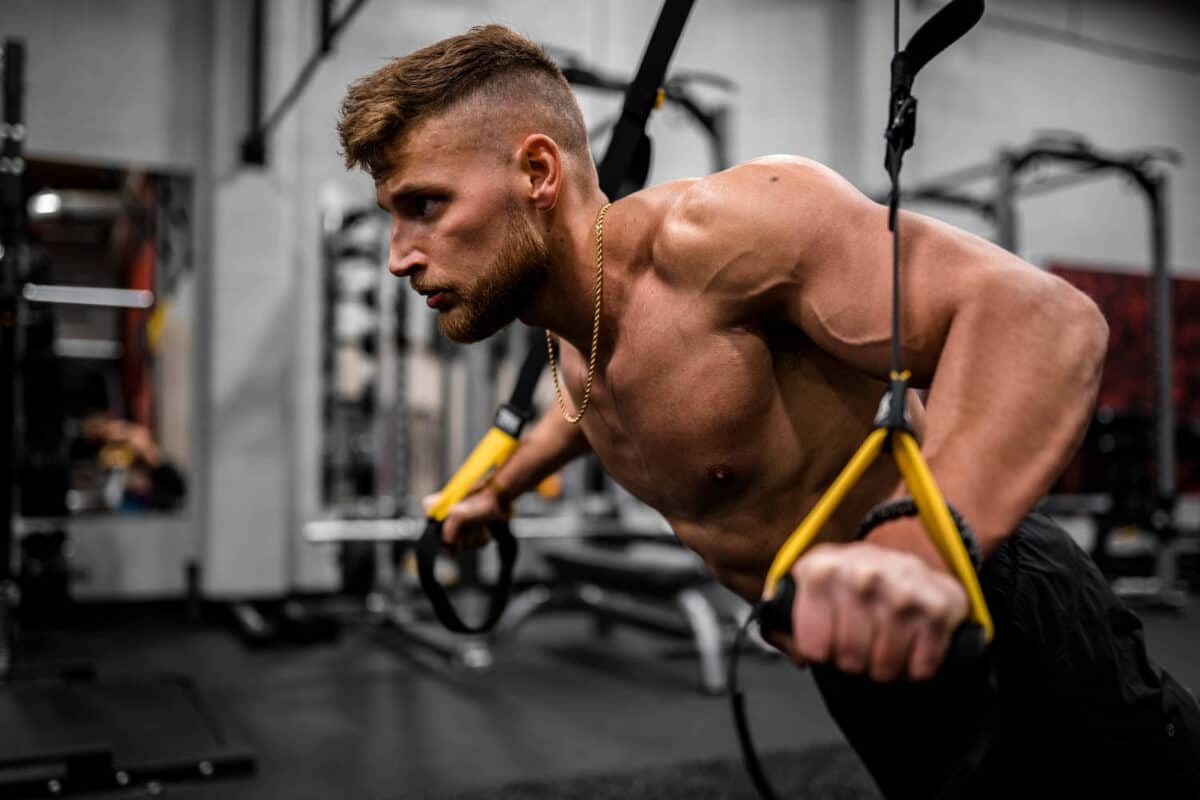In the following article, we will review the different types of muscles in the human body that exist. Subsequently, we will talk about the basic and specific functions of skeletal muscles, referring to their composition, type of muscle fibers, and action.
The human body is composed of around 630 types of muscles that work together to maintain the homeostasis of our organism, thanks to them we can live.
What functions do the muscles of the human body have?
Skeletal muscles are responsible for exerting the main forces that keep our skeleton in bipedalism or in motion.
On the other hand, the muscles of the human body also allow us to renew energy, produce heat, and keep vital processes active.
Next, we will begin to describe the different types of muscles that we have in our organism and discover their main functions and characteristics.
Types of muscles in the human body
Our muscles in the human body are not all identical nor do they have the same functions. In fact, we can divide them into three large groups: skeletal muscles, smooth muscle, and cardiac muscle.
Each of the muscles in the human body has a unique structure, specific function, and an important role in our organism.
The muscles generally have a reddish color, this is due to a notable blood supply caused by their high energy demand. Transporting in this blood multiple plasma proteins that contain iron and oxygen called hemoglobins.
Our muscles in the human body are not all identical nor do they have the same functions.
The muscles of the human body are the main ones responsible for producing movement, in addition, it is a contractile organ that determines the shape and contour of the body.
The bones or structures would be like the chassis of the body which is mobilized by these skeletal muscle forces.
The smooth muscles of the human body are important in many bodily functions and are part of specific organs, such as the walls of blood and lymphatic vessels, the digestive tract, the airways, the bladder, the bile ducts, and the uterus.
Finally, the cardiac muscle is responsible for generating involuntary contractions that allow the proper functioning of the heart.
Mainly, for it to pump blood and constantly nourish the entire organism. Next, we will see in more depth the different characteristics of these muscles and their functions (1).
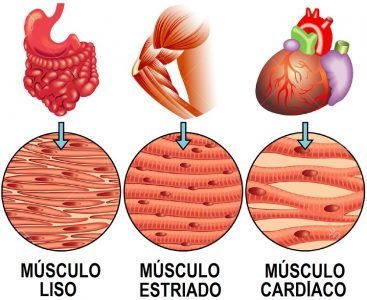
Main characteristics and functions of skeletal muscles
The types of skeletal muscles are the most prevalent in our organism, many of them can be seen with the naked eye. Approximately, 90% of the muscles in the human body are striated skeletal muscles.
Skeletal muscles are inserted into the bones through tendons and their driving force allows us to create mobility and stability. Their contraction and relaxation actions are fundamental for movement, and they originate thanks to messages commanded by the central nervous system.
What functions do the muscles of the human body have?
The main functions of the different types of skeletal muscles are to: allow body stability-mobility and the translation of our body, produce energy through mechanical tension, generate heat, protect bones and provide joint stability allowing to maintain an adequate posture (2).
Skeletal muscle cells have some particular characteristics. One of them is the ability to be stimulated, called excitability or irritability processes.
These cells are easily stimulated so they can respond to different regulatory mechanisms, for example, nerve impulses.
Skeletal muscle is fundamental as a nutrient reservoir, since it houses large reserves of glycogen, which are mobilized in response to energy needs.
On the other hand, it is a great indicator of quality of life, as it has been shown that its high percentage is associated with better cardio-metabolic health and lower risk of sarco-dynapenia (3).
Characteristics of smooth muscle
The types of smooth muscles are characterized by having a small number of nuclei compared to skeletal muscle. These are mainly located in the internal walls of the viscera or organs of our body.
Their actions are fully involuntary, meaning that their muscle contractions are carried out by impulses generated in the autonomic nervous system.
Nerve impulses travel through the smooth muscle tissue and generate the contractions of the muscle fibers, this, in order to carry out digestive processes that mainly require intestinal motility.
The way the muscle fibers are arranged in smooth muscle allows contraction and relaxation actions to develop with great elasticity. One of its most well-known voluntary actions is motility.
This action effectively allows the transfer or movement of food through the digestive tract.
The functions of smooth muscle are also carried out in the urinary bladder and the uterus, where this tissue allows them to contract and relax according to the required needs.
On the other hand, the smooth muscle of the digestive tract is a great facilitator of peristaltic waves that help move food.
A fundamental action to transfer food to the duodenum where their nutrients will be extracted in what is known as the intestinal phase. Another example of smooth muscle is the eye, where smooth muscles allow changing the shape of the lens to better focus objects.
Interactive game of the main muscles of the human body
Next, we share an interactive game to learn in a much more didactic way all the muscles of the human body.
Main characteristics and functions of cardiac muscle
The main organ composed of cardiac fibers is the heart, which is made up of three different layers of muscle, endocardium, myocardium, and pericardium.
The central part or middle layer is the myocardium and is responsible for the contraction of the heart and therefore, the pumping of blood to the entire organism.
The cardiac muscle performs its contractions in response to the action of automatic fibers that give conduction and contraction signals. This is to allow the cardiac cycle or heartbeat to occur.
The cardiac muscle is composed of cells called cardiocytes, these cells have a striated appearance very similar to that of skeletal muscle, but their general structure is shorter and thicker.
In addition, its principle of stretching and shortening is governed in a fully involuntary manner (4).
The cardiac muscle fibers are a fundamental part of the electrical conduction system. Without this system, the synchronous contraction of the myocardium would not be possible, where specialized nodes act that allow electrical signaling and cellular depolarization of the automatic fibers.
The cardiac muscle performs its contractions in response to the action of automatic fibers that give conduction and contraction signals.
Classification of the types of muscles in the human body according to their shape and arrangement
We have already classified the types of muscles in the human body based on their physiological aspects.
Next, we will see the classifications of the muscles according to their shape and arrangement in which their muscle fibers are presented. In this way, we can classify the different skeletal muscles:
- Flat: Fan-shaped, basically characterized by their flattened base. For example, the pectoral muscle.
- Short: Regardless of their shape, they are muscles characterized by their short length, for example, the facial and cranial muscles.
- Wide: They are muscles of the human body characteristic of fibers with a thick diameter. For example, the Dorsal.
- Elongated or fusiform: They are wide in the center and narrow at their ends. For example, the rectus femoris, triceps, or biceps.
- Unipennate: They have a half-feather shape and originate from the side of a tendon. For example, the common extensor of the toes.
- Bipennate: Feather-shaped, their fibers originate from the center of a tendon. For example, the rectus femoris.
- Multipennate: Their fibers arise from different tendons at once and have a complex organization. For example, the deltoid or the most present muscle in the shoulder joint.
- Digastric: It is a muscle with two muscle bellies. It extends from the base of the skull to the hyoid bone and from there to the jaw.
- Polygastric: Refers to muscle groups with several bellies, covered by a common fascia, which provides containment of the rectus muscles of the abdomen.
- Biceps: Muscles of the human body that have one end that inserts into the bone. While at the other end it has two parts that insert into the bone, hence its name which means two heads. A clear example is the biceps femoris.
- Triceps: Similar to the previous one, the muscles at one end insert into the bone. But it differs at the other end, where the muscle divides into three parts when inserting into the bone. For example, the triceps brachii.
- Quadriceps: Its muscle structure is similar to the two previous ones. Unlike in this case, there are four tendons individually inserted into the bone (5).
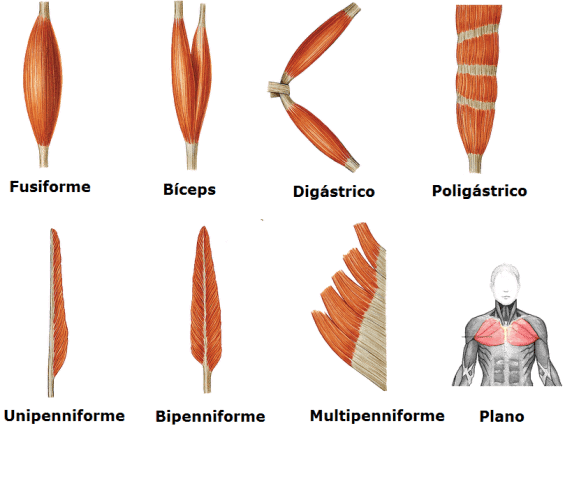
Classification of the types of muscles in the human body according to their possibility of movement
The muscles of the human body are force vectors that allow us to perform multiple actions in different planes and axes. This, with the clear purpose of allowing us to generate or create movement.
When we mention these movements, we must talk about the action of important muscles of the human body such as:
Abductor muscles
They allow abduction or separation from the reference plane in the coronal or frontal axis. For example, by allowing us to separate the legs or arms from the axial axis towards the coronal axis.
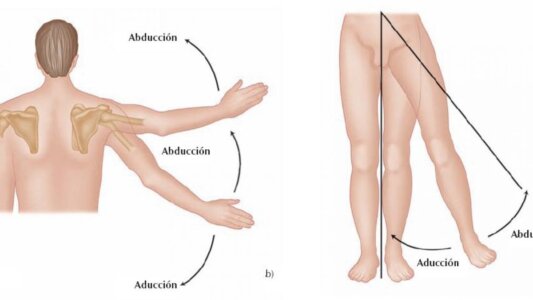
Adductor muscles
Contrary to the previous one, the adductors bring us closer to the reference plane by bringing a part of the body to the vertical axis. For example, by closing or bringing the legs closer to each other.
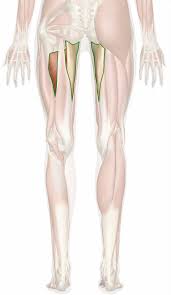
Flexor muscles
Basically, they allow us to flex a joint or bring the muscle insertion points closer in the sagittal plane. A good example would be flexing the knee or elbow.
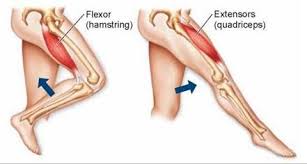
Extensor muscles
They generate an action opposite to the previous ones, moving the insertion points away. Performing actions such as extending the elbow, shoulder, or knee for example.
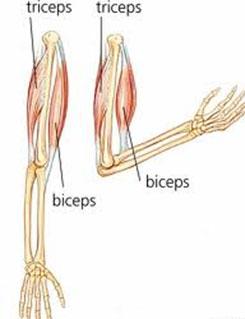
Supinator muscles
These perform an outward rotation movement in the vertical axis represented in the transverse plane. For example, when we rotate the wrists or hips outward.
Pronator muscles
Action opposite to the previous muscles of the human body. These are responsible for an internal rotation movement in the transverse plane. For example, they allow us to rotate the wrists or hips inward (6).

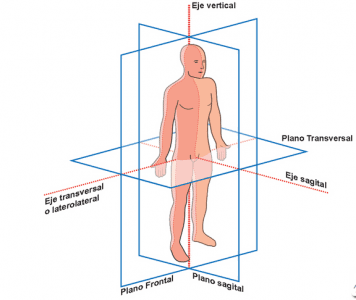
Classification of the types of muscles in the human body according to their action in a group
When performing different actions or movements, muscle groups cooperate with different specific functions of this, that is, each muscle group that participates in said action will act differently.
These muscle actions can be given by:
Agonist muscles
They are muscles of the human body that follow the same direction and allow us to perform the same movement in parallel. Characterized mainly by the concentric action or approximation of the insertion point of their muscle fibers.
Antagonist muscles
They are precisely those muscles of the human body opposed to the movement of the agonists. For example, when an agonist muscle contracts, the antagonist relaxes and vice versa, moving the insertion point of their muscle fibers away.
Synergist muscles
They are those muscles of the human body that indirectly allow the movement to be performed correctly. Their function is similar to that of the agonists, but they would have a more stabilizing and controlling role in the movement.
A clear example of all this is when flexing the knee where the hamstring fulfills an agonist action, the rectus femoris antagonist, and the gluteus synergist. another example below;
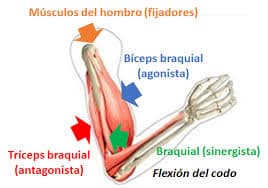
Our body when training and performing all kinds of movements does so taking into account these force vectors, where each muscle group plays a particular and fundamental role.
View this post on Instagram
